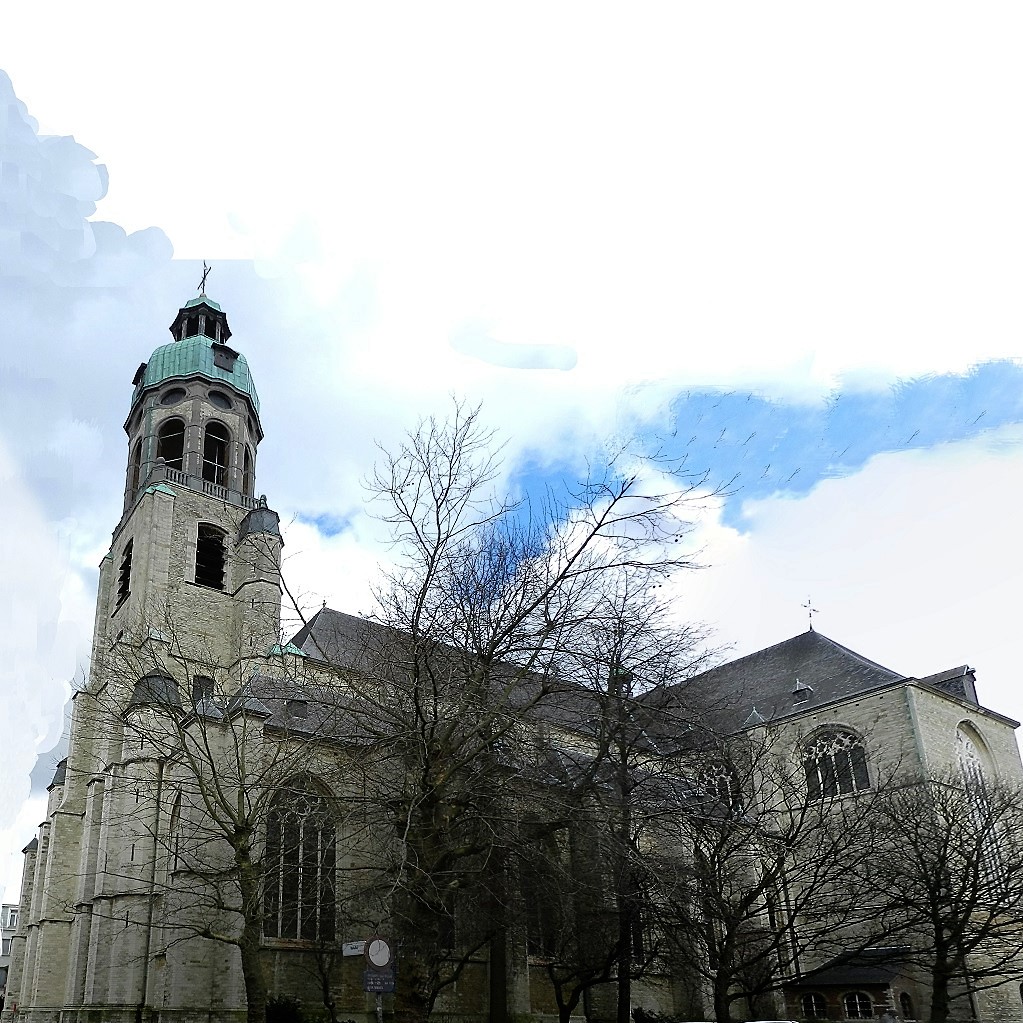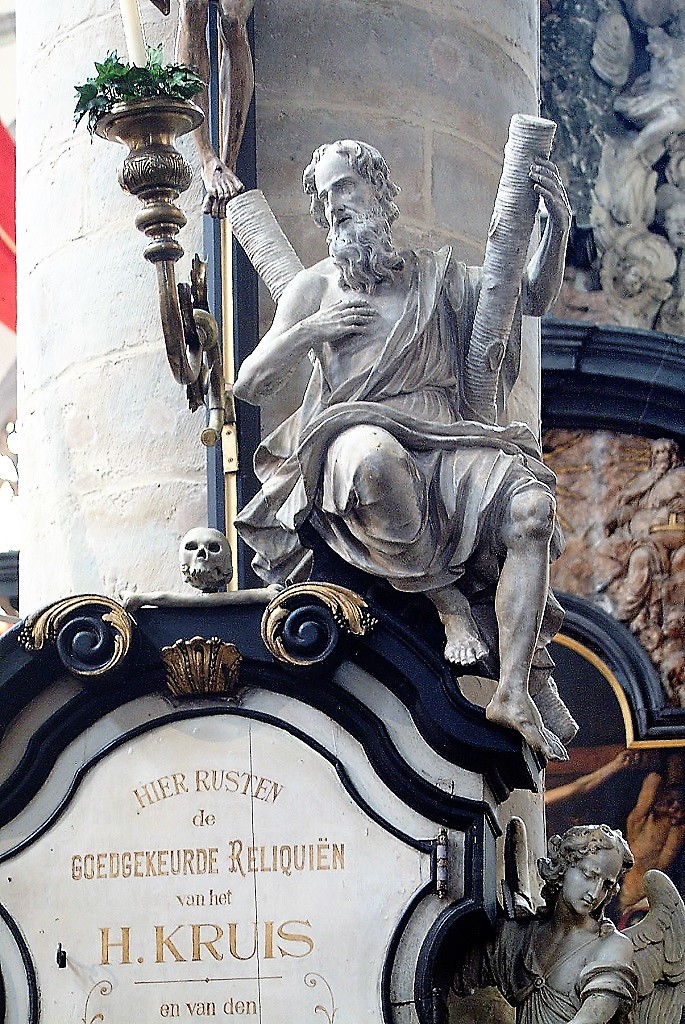Antwerp's St Andrew's Church, a revelation.
St. Andrew in 'his' Church
For a while, Andrew watched over his parish, sitting as a weathervane on top of the former church tower. Today, the saintThis is a title that the Church bestows on a deceased person who has lived a particularly righteous and faithful life. In the Roman Catholic and Orthodox Church, saints may be venerated (not worshipped). Several saints are also martyrs. welcomes visitors from above the main entrance. Up until 1929, the saint’s statue took part in the procession, dressed in festive bishop’s vestments. Painted in neo-Gothic style, this procession statue (ca. 1600?)with its character head currently welcomes visitors at the side entrance in the southern transeptThe transept forms, as it were, the crossbeam of the cruciform floor plan. The transept consists of two semi transepts, each of which protrudes from the nave on the left and right..
The image of the parish’s patron can be found on many a ceremonial staff, procession banner, altarThe altar is the central piece of furniture used in the Eucharist. Originally, an altar used to be a sacrificial table. This fits in with the theological view that Jesus sacrificed himself, through his death on the cross, to redeem mankind, as symbolically depicted in the painting “The Adoration of the Lamb” by the Van Eyck brothers. In modern times the altar is often described as “the table of the Lord”. Here the altar refers to the table at which Jesus and his disciples were seated at the institution of the Eucharist during the Last Supper. Just as Jesus and his disciples did then, the priest and the faithful gather around this table with bread and wine. cross, offertory box, fraternity register or name panel. His emblem, the St. Andrew’s Cross, marks the tower cross, the church floor, the pulpit roof; further, the cross sign is seen on the tabards, the churchwardens’ chairs, the stationery and even on a churchwardens’ safe
Over the centuries, a miniature life cycle of the saint was set up inside the church. Initially, Andrew was awarded the place of honour at the main altar, where his Martyr’s Death (by Otto van Veen) caught the eye. In true Counter-Reformation style, the altar project of the late 17th century set out to underline the saint’s apotheosis with a group of statues that would be set, literally, in the light of a Baroque cupola construction; however, this design was never executed.
When the current main altar was put in place in 1807, the altar painting by van Veen had to be removed and was placed on a less conspicuous side wall of the choirIn a church with a cruciform floor plan, the part of the church that lies on the side of the nave opposite to the transept. The main altar is in the choir.. However, the patron saint was given full attention once again in the main stained glass window of the southern transept (by G. Barry, 1920). In the window’s lowest register, the saint can be seen kneeling before the cross of his martyrdom, not fatalistic, but longing to embrace the wood. In the upper register, his glorification in heaven has now been depicted as well: together with his brotherA male religious who is not a priest. Peter, Andrew is received by Jesus.
At the foot of the current pulpit (1821-1825), Andrew’s calling serves as an inspiration to anyone coming to listen to the power of Jesus’ message.

- Saint Andrew’s Church
- History and description
- Introduction
- The historical context
- Building history
- The patron saint
- The outbuildings
- The tower
- Spatial effect
- Saint Andrew’s identity card
- Saint Andrew in Art
- Saint Andrew in ‘his’ church
- The ancient high altar
- The current high altar
- Choir and chancel
- The choir stalls
- The celebration altar
- The Venerable Chapel
- The Mary Chapel
- The Minters’ Altar
- What is Truth?
- Holy Cross Altar
- Saint Anne’s Altar
- The pulpit
- The confessionals
- The organ
- Stained glass – southern aisle
- Stained glass – northern aisle
- The Way of the Cross
- Funeraria
- The treasury
- Bibliography


